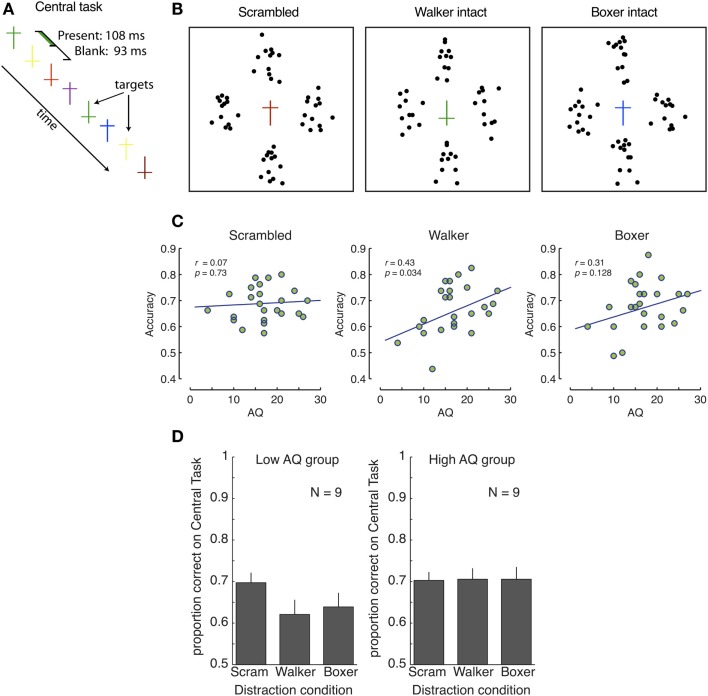Figure 1.
No involuntary, automatic, direction of attention to global biological information. (A,B) Experimental design. (A) The central task consisted of counting the upright yellow and inverted green crosses; there were always one or two targets present. (B) The central task was surrounded by either four scrambled actions (two scrambled walkers, and two boxers), or two intact walkers or boxers (supplemented by two scrambled actions of the other action type). (C) Correlations between AQ and accuracy in the central task for scrambled (left), walker (middle), and boxer (right) actions. (D) Central task performance for low and high-AQ groups. Performance in the scrambled condition was comparable between groups, demonstrating no advantage for the potentially detail-oriented high-AQ group. With intact biological motion displays, the performance decreased significantly for the low-AQ group. No such decrease occurred for the high-AQ group, indicating that they were not distracted by, and did not process, the global aspects of the peripheral biological motion stimuli. Error bars represent SEM.

